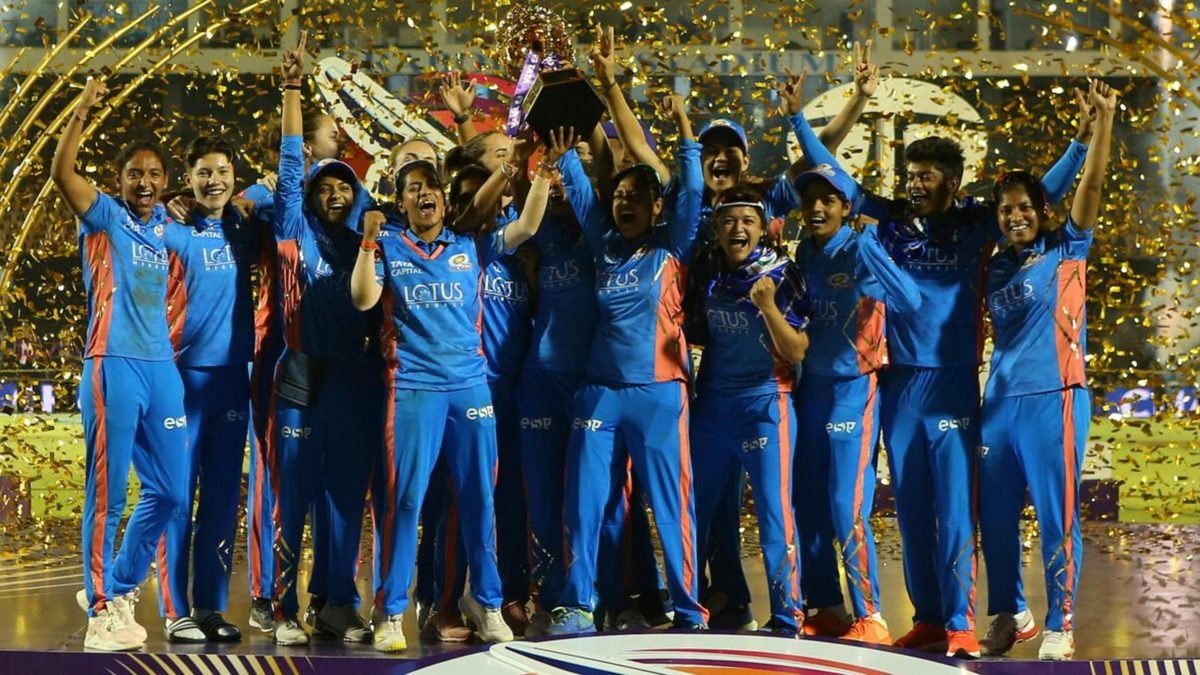
It’s only April, but there’s been growth of investment and opportunity at all levels for women’s cricket, writes Karunya Keshav.
On Wednesday in Kowloon, Hong Kong, Brazil’s Laura Cardoso got England’s Danni Wyatt and Sri Lanka’s Chamari Athapaththu out in back-to-back overs in their match at the FairBreak Invitational Tournament 2023.
Yes, there’s a women’s tournament happening in Hong Kong; yes, the nationalities represented rival a model UN; and yes, look how far women’s cricket has come – but there’s more.
Cardoso just turned 18. She was spotted as a 12-year-old participating in Cricket Brasil’s community projects. Three years later, she was among the 14 players who earned Brazil’s first full-time professional contracts – handed out to the women before the men. In three years since, she’s put in the work and had access to a programme that has brought her game to a point where she shares the dressing room with the likes of Deandra Dottin, Laura Wolvaardt and Lauren Winfield-Hill at a tournament like the FairBreak, and beats their performances to win Player of the Match.
As I write this, four matches of the FairBreak Invitational have been completed. In a tournament featuring some of the biggest names in cricket along with talent from Associate nations, four teenagers, including Cardoso, have walked away with the match awards.
Of them, UAE’s Mahika Gaur is a 6’1” left-arm pacer who could have been a part of WPL if Gujarat Giants had counted their overseas places correctly and some other franchises had a better scouting system in place. Theertha Satish, also representing UAE and who was inspired to take up cricket after watching a Tamil movie, led her team to the Under-19 World Cup this year. And Phoebe Litchfield was among the names included in Cricket Australia’s landmark contracts announced this week.
Each of these four stand as a symbol of why 2023 has been so special for women’s cricket.
In women’s sport, we’re often left celebrating the small wins. You needed a magnifying glass to see the needle move. Applause is almost always accompanied by an apologetic “but also …” to point out that change should be systemic, not cosmetic. But this year feels different: There’s been genuine progress at every level of the game.
The U19 World Cup, in which Theertha led, has boosted the grassroots. It has encouraged cricket-playing nations to invest in programmes and pathways. These in turn have invited girls to stick to cricket – or indeed sports – at an age when many consider giving it up.
The Women’s Premier League, in which Gaur was so close to playing, has raised the bar for commerce and marketing in women’s cricket. In the US, the final of the Women’s basketball March Madness broke records by being the most watched women’s college basketball game ever, and the most streamed sporting event, women’s or men’s, on ESPN+. In India, the WPL created its own version of March Madness. It followed up record team valuations and record broadcast rights with record viewership: Viacom18 claimed the final, won by Mumbai Indians, was watched by 10 million new viewers.
Cricket Australia’s new MoU with the Australian Cricketers’ Association respects the labour of women and is a commitment, in unambiguous monetary terms, to equality and quality. The deal assures the women of 66% increase in payments, as against an overall 26% increase in player pay. It makes a strong argument for cricket to be the sport of choice for Australian women, while giving them the resources to invest in themselves and their game and be better athletes.
While the much-decorated national side, including Litchfield, will enjoy a pay hike and some will potentially be “millionaires”, of more significance is the improvement in WBBL and state contracts. According to the deal, women’s retainers in state contracts are at 70% of their male counterparts’.
“We are on a path, we are not there yet,” Cricket Australia CEO Nick Hockley said of the march to achieving pay parity at the domestic level. “But we have taken a major step forward in closing the gap.”
And just when you think that the big developments in cricket are now all about the money, there comes FairBreak with a reminder that the growth of a sport is as much, if not more, about opportunities and human connections.
The tournament, which is in its second edition in this avatar, extends opportunities to those beyond the top six nations and brings together the best in the world to play alongside and mentor them. It rewards initiatives like in Cardoso’s Brazil, where the board has taken a female-first approach to growing the game.
With all this – and it’s just April! – it’s heartening to see women’s sport thrive again after the blip of the pandemic years.
If the growth of women’s sport stays on this trajectory, we might very well end up rewriting this headline for the next few years. According to the seventh edition of the PwC Global Sports Survey, over 70% of respondents forecast double-digit revenue growth for women’s sports over the next three to five years.
“The key challenge for the industry now is to capitalise on the current momentum to create real and lasting change to ensure women’s sport develops into an economically sustainable sector,” says the report. And developments like we’ve seen this year are key to that.
“Increasing the visibility of women’s sports on high-reach networks can set a powerful flywheel in motion,” adds the report.
In cricket, it feels as if the flywheel is well and truly in motion. And, gloriously, there’s no turning back now.








